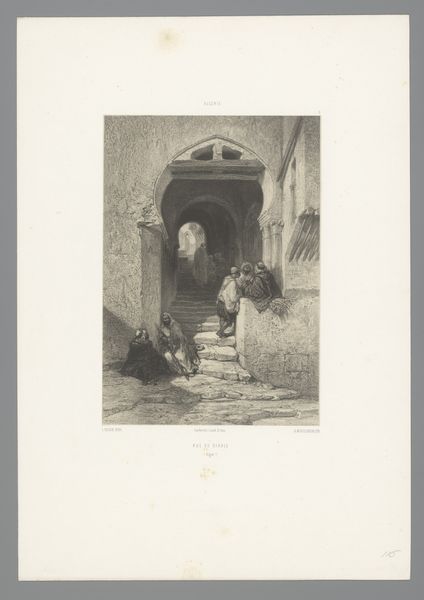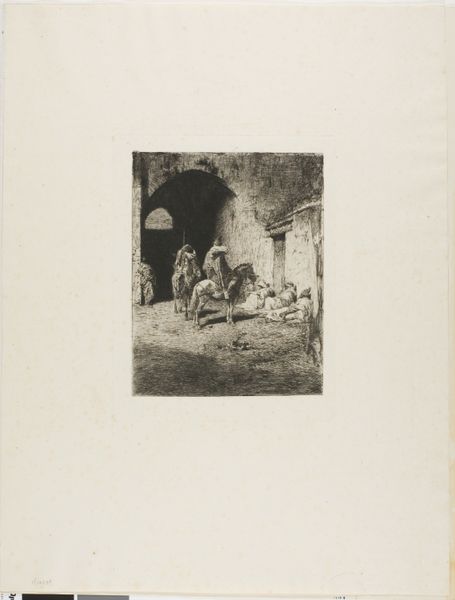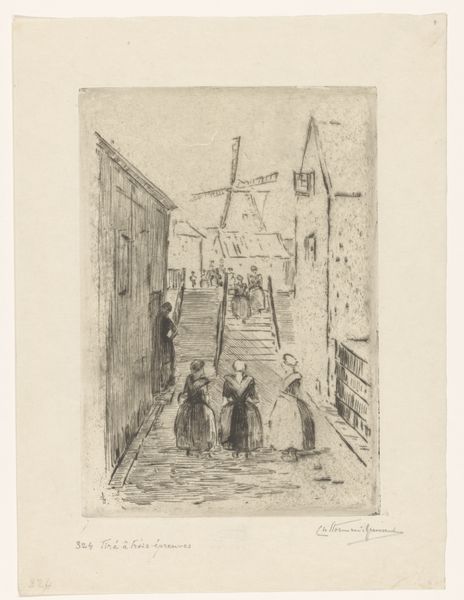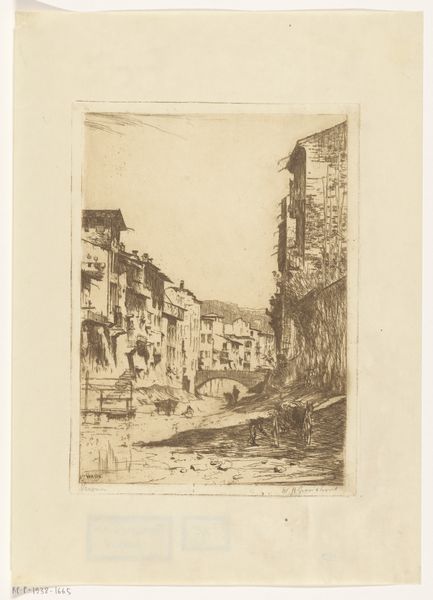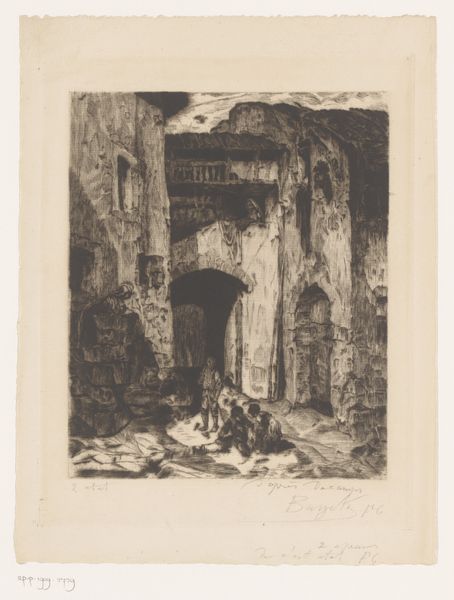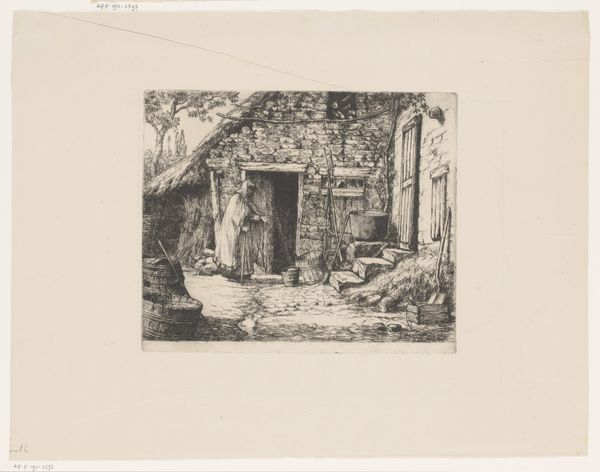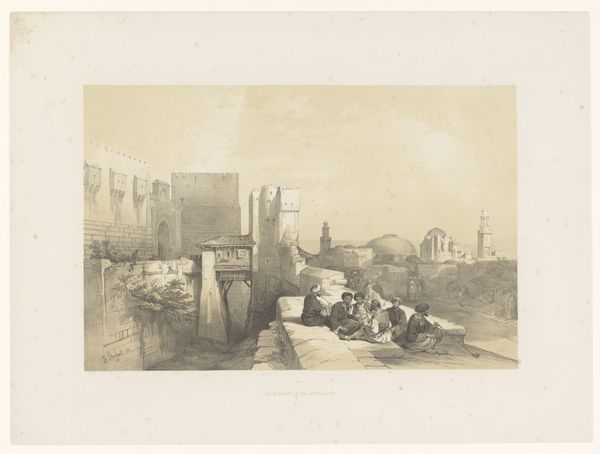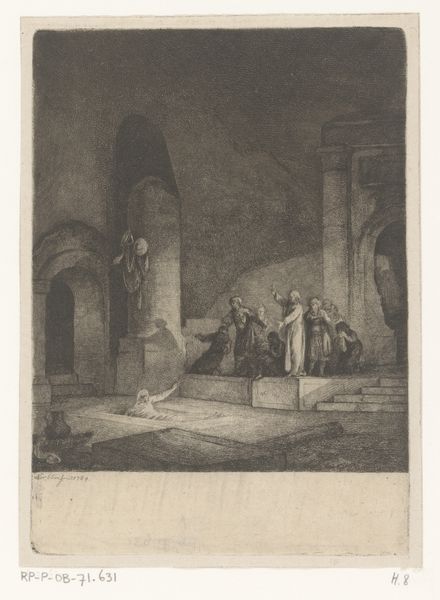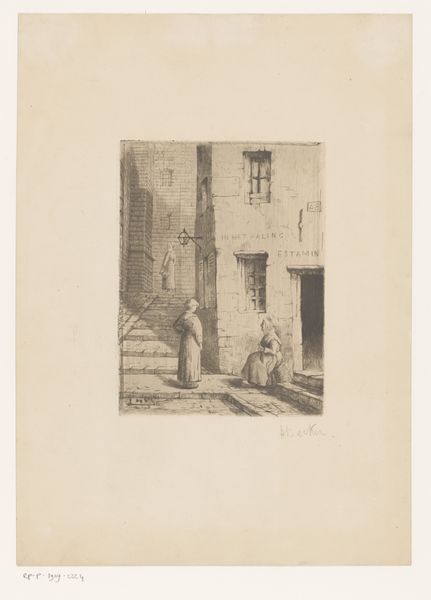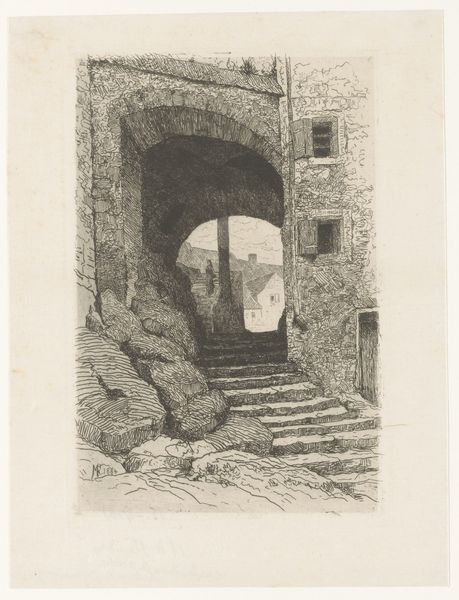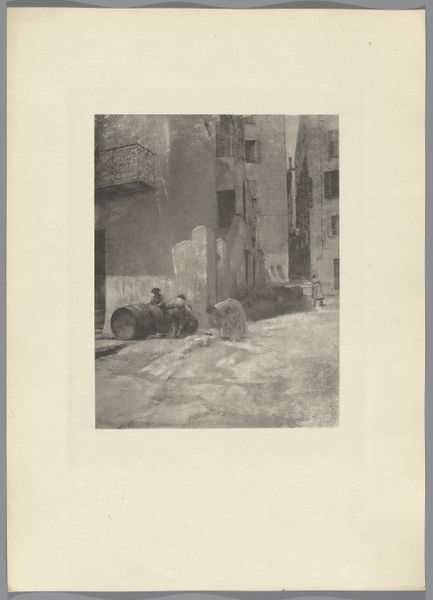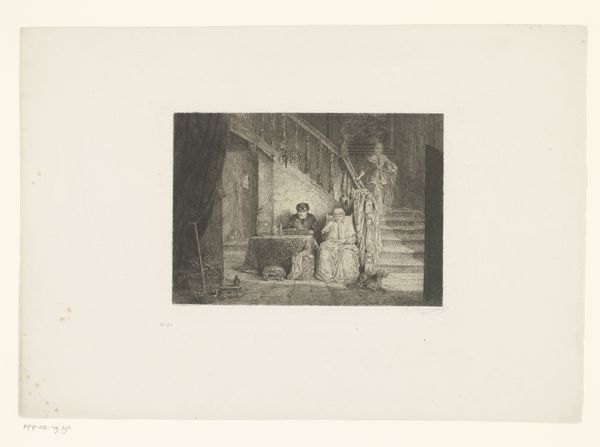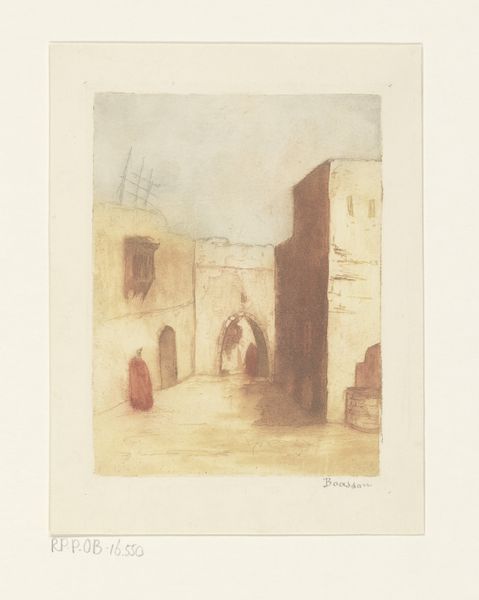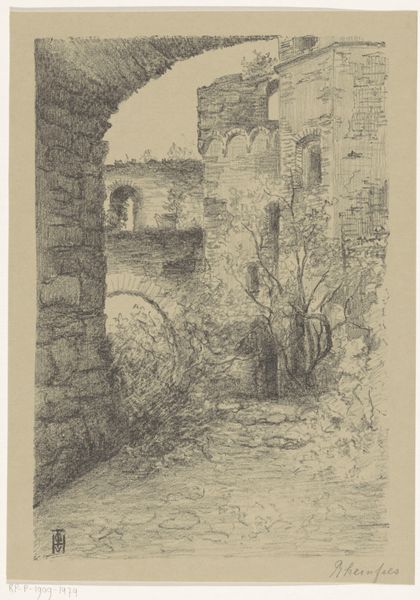
print, engraving
# print
#
landscape
#
genre-painting
#
engraving
#
realism
Dimensions: height 231 mm, width 182 mm
Copyright: Rijks Museum: Open Domain
Curator: This print, "Zicht op een straat met spelende kinderen," or "View of a Street with Playing Children," is an engraving realized by Léon Gaucherel somewhere between 1860 and 1886. It depicts daily life in an Italian village, focusing on children playing in the street. What strikes you first? Editor: It's immediately the textures for me—the roughness of the stone walls, the earthy ground where the children are playing. You can almost feel the grit of the material and sense the weight of the labor involved in building this environment. Curator: Absolutely, and it’s crucial to consider how Gaucherel’s print participates in a broader visual rhetoric, which, throughout this era, situated scenes of children at play as picturesque symbols of both rural life and idealized poverty, often romanticizing the hardships associated with labor exploitation and limited social mobility. Editor: Exactly. And to get to the materials of it...look at the different shades in the architecture versus the softer quality in the clothing. I want to really emphasize how all these variations were produced with just line work. It underscores the sheer skill and labor needed for its making. I think that changes the scope for viewers and consumers when looking at the image. Curator: It's vital to understand how these prints circulated and functioned within specific social and political landscapes. Who consumed these images? What did they represent in relation to prevailing notions of childhood, class, and national identity? Considering Gaucherel’s strategic manipulation of gender, poverty and social mobility encourages a deeper engagement with the socio-political themes present in the piece. Editor: I agree; by examining Gaucherel’s use of materials, tools and labor, it becomes easier to see how it connects to that broader socio-economic framework. Where did Gaucherel even produce the work and under what condition? That would reveal more on the social context within. Curator: Right. What we witness is, in essence, the product of certain conditions, biases and beliefs deeply ingrained within 19th-century society, shaping everything from artistic creation to interpretation, even today. Editor: These points help to move beyond that simple interpretation into something way more rich, wouldn't you say? Curator: Most certainly, it helps situate artworks into more nuanced cultural analyses.
Comments
No comments
Be the first to comment and join the conversation on the ultimate creative platform.
